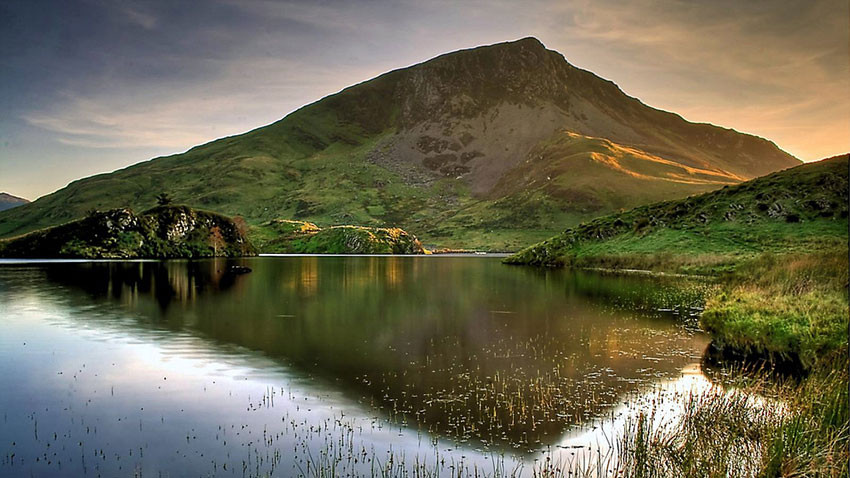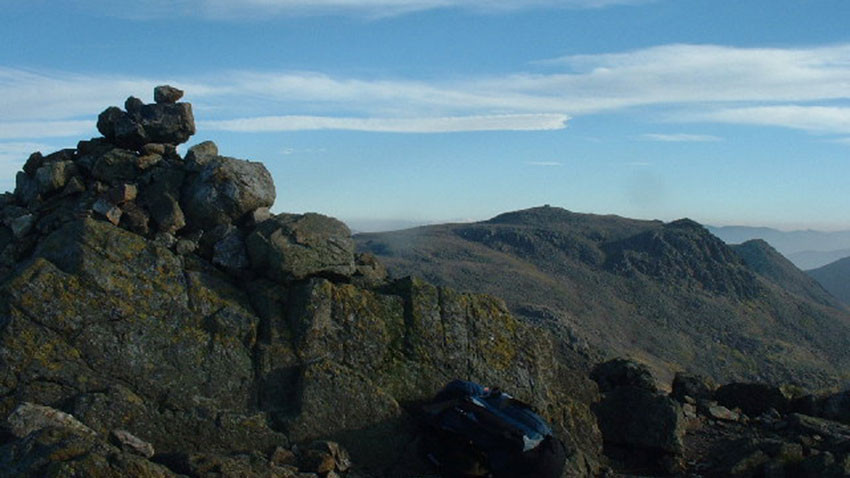Avoid the coach parties and Instragammers with the most epic hidden routes
There are many joys that come from mountain hiking. Immersed in nature, you get a dose of fresh air, a feeling of freedom and a huge sense of satisfaction when you make it to the summit. But many of the better-known mountains are getting so popular with hikers that it’s hard to appreciate the views and good vibes as you jostle for space on the trails or at the summit cairn.
So how to avoid the crowds? You could go ridiculously early, and be more likely to get the trails to yourself. Or hike during off-season – in most places, summer is high season on the trails, so head out from September onwards. But the best option is to find an alternative – you may be surprised to discover a new route that’s just as worthy of attention, but that hasn’t got as many hikers.
- Upgrade your footwear: The best hiking boots for men | The best hiking boots for women
There are plenty of alternatives to crowd-magnet mountain walks. Some of them are quieter options, located near the busier peak itself. Others offer a similar hike, with equivalent climbs and views – minus the people. You could hike up a mountain that’s near a more famous peak – and get a better view of the peak itself.
As on any hill walk, proper kit and good navigational skills are essential. You’ll also need to check the weather before you go, and pack for any eventuality, as conditions can change quickly on the mountain.
From Snowdonia to Sri Lanka, here are some of our favourite mountain hikes that are a great alternative to a busier trek.
Swap Snowdon for: Y Garn, Snowdonia

If you’re in beautiful Snowdonia, you might be tempted to head for its most famous resident, Mount Snowdon. But this is by no means the only mountain you should hike in this Welsh region. Travel a couple of valleys northeast and you’ll reach Y Garn, which is almost as tall (947m compared to Snowdon’s 1,085m) and equally as stunning.
A four-mile loop from the car park will take you up and down in around 90 minutes. Y Garn is Wales’ tenth highest mountain, and has earned its place as part of the Welsh 3000s challenge, which sees people race up and down the 15 tallest peaks in Wales.
Hiking to the top is worth every effort for the summit views (on a clear day!) over lakes and towards Anglesey and the Irish Sea.
Swap Trolltunga for: Himakånå, Norway

Jutting out 700 metres above lake Ringedal is Trolltunga, a dramatic cliff formation. So dramatic, in fact, that it can get mobbed by tourists looking for the perfect Instagram shot. It’s a 27km round-trip with almost 1,000 metres of ascent, making it tough for families and those short on time.
Enter Himakånå, an excellent alternative if you’re looking to beat the crowds. Tucked away in a corner of Tysvær township, it’s nicknamed Little Trolltunga because it shares an uncanny resemblance. But while it will take around three to six hours to reach the top of Trolltunga, here you’ll only need around an hour to reach the 357m-high mountain overhand.
The trek is faster, more accessible, and family friendly – and still offers panoramic views of fjords and forests.
Swap the Tour de Mont Blanc for: the Tour De Vanoise, France

For European hiking, the Tour de Mont Blanc is seen by many as the mother of all treks. It takes in the highest mountain in the Alps over 170km, passing through France, Italy and Switzerland with 10,000 metres of cumulative ascent and descent spread over (usually) 11 days. But it’s so popular that its trails and quaint mountain huts are often rammed.
For more solitude, with equally magnificent valleys and a similar hike (150km), consider the Tour De Vanoise. A short distance south of Mont Blanc, this is also a circuit walk taking approximately 11 days. It also circumnavigates a mountain massif – in this case the Vanoise, which contains over 100 3,000m peaks.
Expect glaciated mountain views, alpine streams, chamois – and fewer people.
Swap Scafell Pike for: Scafell, Lake District

England’s highest mountain, Scafell Pike, is packed with hikers, especially on a sunny bank holiday. But anyone planning on hiking up the country’s second-highest peak, Scafell, can enjoy the same vast vistas from an empty summit.
Scafell is less than a mile away from its famous big brother, and only slightly lower (14m). You’ll have those big Lake District views to yourself, instead of battling for your summit cairn photo with a crowd of others.
Set out from Wasdale for the most direct route, or go for the long, challenging climb via the Esk gorge with its tumbling waterfalls and ice-cold plunge pools. Perfect for a refreshing dip.
Swap Mount Fuji for: Mitsutoge, Japan

Mount Fuji is the world’s most climbed mountain – around 300,000 people a year climb to the snowy tip of Japan’s highest peak. But why not avoid the hordes and climb a nearby mountain instead, where you can marvel at Fuji’s snow-capped beauty in your own space?
Mitsutoge is arguably the best mountain to get a good view of Mount Fuji. You can easily climb to its 1,785m-high summit and down again in a day most of the year. The route, which starts at Mitsutoge train station, takes you along a narrow paved road for around an hour, before you begin climbing a steep forest trail for a couple of hours, passing 88 Buddha statues until you reach the top.
When the weather is fine, it offers a 360-degree vista stretching from Tokyo to Mount Fuji and over to Japan’s Southern Alps.
Swap Table Mountain for: Lion’s Head, Cape Town

With its flat top soaring into the sky, Table Mountain has become an icon of Cape Town. It’s easy to reach and, as well as hiking to the top, you can even take a cable car for unparalleled views of the city. But that accessibility means it can get swamped, especially on a sunny day.
For a quieter alternative, head 4km north, to Lion’s Head. Set between Table Mountain and Signal Hill, you’ll get excellent views of the city below you once you reach its 669m-high summit. The only way to reach the top is on foot – expect ladders and scrambles – and it’s arguably the best place to watch sunrise or sunset over the bay.
Swap Ben Nevis for: Cairn Gorm, Scottish Highlands

Getting to the top of Ben Nevis, Britain’s highest mountain, is a huge achievement and on many hikers’ bucket lists. But the route to the top is usually heaving. If you’re after an adventure on a similar scale, but without the crowds, head for Cairn Gorm (Britain’s sixth-highest mountain).
Start the circuit from the Cairngorm Mountain ski centre car park and follow it up to Cairn Lochan and over the craggy northern corries to Cairn Gorm itself. Your descent takes you via Sròn an Aonaich, skirting the Cairngorm plateau, the highest terrain in Britain.
Swap Half Dome for: Mount Hoffmann, Yosemite

Along with El Capitan, Half Dome is one of the best-known rock formations in Yosemite National Park, California. It’s a strenuous climb to the top (2,694m) and because it’s so popular, it’s difficult to get a permit. Instead, strike for the geographic centre of the park, where Mount Hoffmann looms large, yet with fewer hikers on its summit.
It’s a steep and strenuous hike that will take a couple of hours for most people, but it’ll be worth it. The trail takes you past pretty May Lake, before a tough climb the summit for mind-blowing panoramic views.
Swap Adam’s Peak for: the Knuckles Range, Sri Lanka

Climbing Adam’s Peak is more like a pilgrimage than a hike – people from all four of Sri Lanka’s religions climb up the 5,200 steps to reach the top of this holy mountain (2,243m) and glimpse its “sacred footprint”. But it gets busy – there’s an almost constant stream of pilgrims between peak season (December to May).
You’ll find far fewer people – and plenty of hiking options – at the Knuckles Range in the Central Highlands. Hike one of the lower peaks, such as Mini World’s End (1,192m) for a day trip. Or set your sights on Gombaniya, the highest peak in this range. From the top, you’ll see lush forests sloping to the green valley below.





